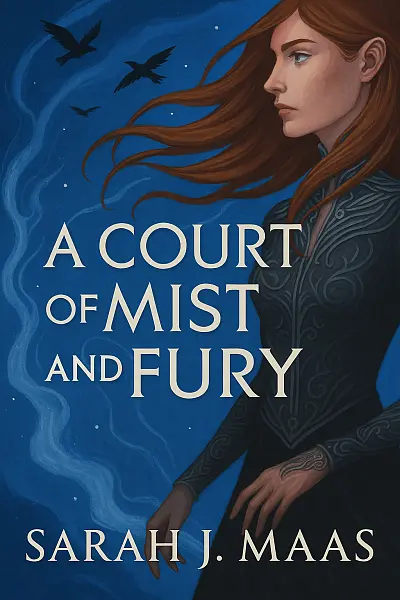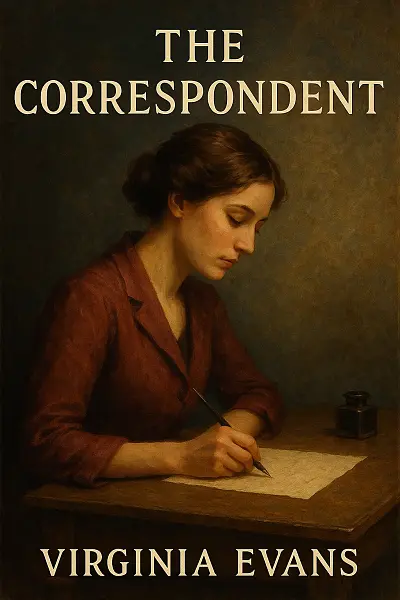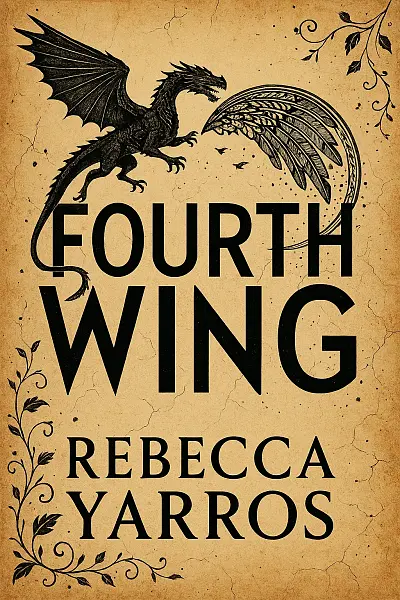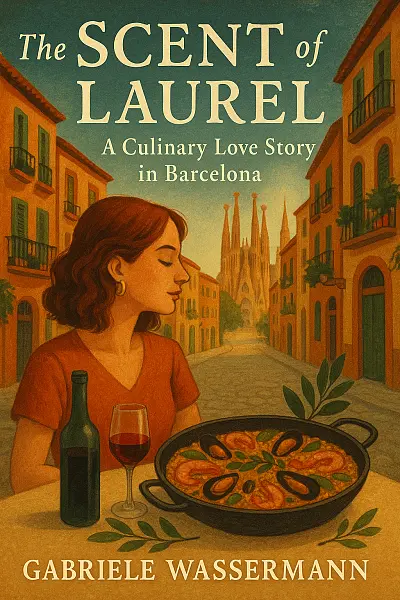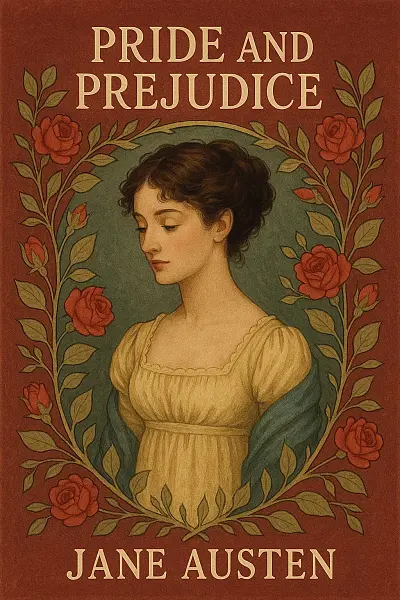
Pride and Prejudice
by: Jane Austen
Elizabeth Bennet navigates the lively social scene of Regency England, where marrying well is everything—but she's determined to value love and integrity over status. Her world gets a jolt when the brooding Mr. Darcy arrives, challenging her beliefs and pride.
As misunderstandings and biting judgments spark emotional fireworks, Elizabeth finds her wit and heart tested by Darcy's apparent arrogance. The stakes? Her family's future, her own happiness, and the possibility that her convictions might be wrong.
With sparkling dialogue, sharp observations, and a ton of romantic tension, Austen keeps us guessing—will they or won't they?
"“The heart’s truest judgments are revealed not in stubborn pride, but in the quiet courage to see beyond first impressions.”"
Literary Analysis
Writing Style
Atmosphere
Steeped in social nuance and gentle satire, the atmosphere of Pride and Prejudice feels lively, elegant, and deceptively tranquil.
- There’s this constant undercurrent of wit swirling beneath the surface, like tea parties laced with clever eye-rolls
- Settings—drawing rooms, gardens, country walks—feel bright, refined, and occasionally stifling, matching the controlled energy of Regency England
- You’ll sense the layered tensions between propriety and passion, with every ball or dinner packed with unspoken drama
Prose Style
Jane Austen’s writing is crisp, sly, and deliciously pointed—each line polished like silverware at a grand estate.
- Dialogue-driven: Conversations sparkle and reveal character; banter is as sharp as the tip of a quill
- Irony front and center: Even the narration is cheeky, with Austen often raising an arch eyebrow at her own creations
- Elegant, not fussy: Sentences are gracefully constructed, but never stuffy or difficult to parse—think clever economy over purple prose
- Subtle emotional depth: Serious feelings simmer just below the calm, civilized exchanges
Pacing
The story strolls at a measured pace, matching the rhythms of polite society, yet always teasing you forward with new developments and sly surprises.
- Early chapters focus on social settings and character introductions, unhurried but never dull
- Austen builds momentum through misunderstandings, letters, and revealing encounters, so pay close attention to small shifts—they matter!
- Whenever the plot cooks up a proposal, a scandal, or a sharp exchange, the tempo quickens and stakes spike
- Overall, it’s a slow burn—satisfying for patient readers who love character-driven twists
Mood
Playful, bright, and irresistibly witty, but with threads of longing and disappointment weaving through the light-hearted surface.
- Expect frequent moments of amusement, rolling along with Austen’s understated sense of humor
- Occasional jabs at vanity, pride, and foolishness add a gentle bite, keeping things from getting too sweet
- The vibe is always socially charged—a blend of anticipation, awkwardness, frustration, and hope
Overall Feel
Reading Pride and Prejudice is like eavesdropping on the most entertaining family in the English countryside: clever banter, simmering tension, and moments of earnest emotion shining through the societal masks.
- You’ll find yourself rooting for character growth, swept up by subtle romantic tension, and cracking a smile at Austen’s literary wink
Key Takeaways
- Witty volleys between Elizabeth and Darcy spark every encounter 🍃
- Netherfield ball drama—awkward dances, sharp glances, and secret piques
- Mr. Collins’s ludicrous proposal: cringe-worthy, unforgettable, and oh-so Austen
- Lydia’s scandal steamrolls the Bennet family toward social disaster
- Letters that change destinies—searing honesty in ink
- Pemberley’s turning point: pride and prejudice unravel with every step on Darcy’s estate
- Satirical take-downs of pompous aristocrats, yet a genuine swoon-worthy romance blooms
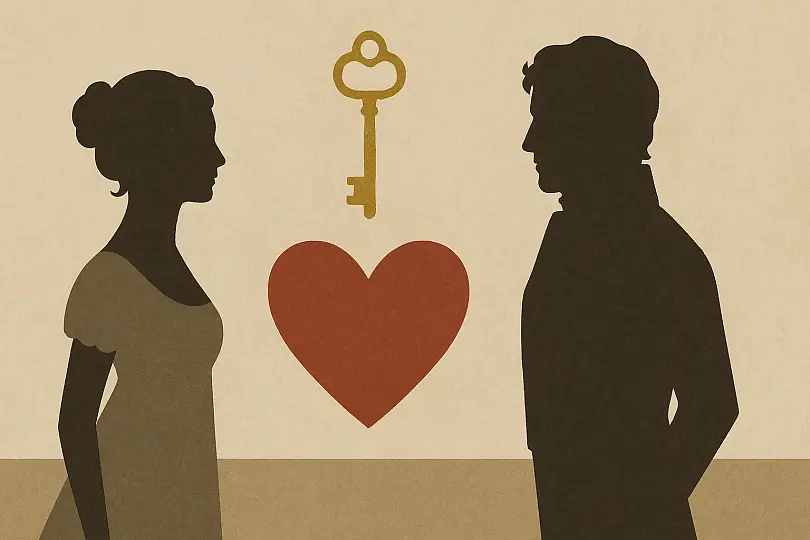
Wit and prejudice clash as hearts battle pride in Regency England’s ballroom.
Reader Insights
Who Should Read This
Wondering if Pride and Prejudice is your next read? Let’s break it down!
If you’re into...
- Witty dialogue and clever banter: You’ll be grinning at the back-and-forth between Elizabeth Bennet and Darcy. Austen’s humor is seriously sharp!
- Romantic slow burns: If you love that “will-they-won’t-they” tension in your love stories, this is basically the gold standard.
- Drama over dragons: No action scenes or fantasy elements here — but if you appreciate social drama and family mishaps, it hits the spot.
- Period pieces: Fans of historical settings and old-timey vibes will eat this up. Bonus points if you like unruly sisters and meddling mothers.
But, honestly, you might want to skip it if...
- You need a fast-paced, twisty plot: The drama is more tea parties than car chases. If you crave big shocks every few pages, this might feel slow.
- Dense, old-fashioned language is a deal-breaker: It’s definitely written in early 19th-century English so if you prefer super modern prose, it may not click.
- Romance isn’t your thing: At its heart, it’s a love story with a hefty dose of social commentary — but yeah, a lot of feelings and misunderstandings.
- You’re looking for quick escapism: This one asks you to settle in, savor the vibes, and maybe even reflect a little. It’s more “cozy afternoon” than “edge-of-your-seat.”
Bottom line:
If you love smart heroines, romance that simmers, and clever social commentary, Pride and Prejudice is basically required reading. But if you need constant action or prefer contemporary settings, you might want to try something else. Either way, it’s worth giving a few chapters a shot — you never know, you just might fall for Darcy too!
Story Overview
Step into Regency-era England, where clever, spirited Elizabeth Bennet navigates the social pressures of family and romance among the gossipy countryside elite. When the wealthy and enigmatic Mr. Darcy enters the scene, sparks—and misunderstandings—fly, raising questions about first impressions, pride, and what it truly means to love and be loved. Full of witty banter, sharp observations, and a cast of unforgettable characters, this classic brims with heart, humor, and the ultimate battle between expectation and desire!
Main Characters
-
Elizabeth Bennet: Witty and fiercely independent, she's the heart of the novel, navigating love and societal expectations with sharp insight. Her journey is all about challenging first impressions and growing into a deeper understanding of herself and others.
-
Mr. Fitzwilliam Darcy: Proud but honorable, Darcy’s character arc is a masterclass in humility and vulnerability. Watching him open up and confront his own flaws is a huge emotional payoff.
-
Jane Bennet: Elizabeth’s older sister, Jane is the embodiment of kindness and grace. Her gentle optimism contrasts beautifully with Elizabeth’s fire, and her romance with Bingley adds that sweet, hopeful touch.
-
Mr. Charles Bingley: Charming, easygoing, and genuine, Bingley instantly wins hearts both in the story and for readers. His straightforward sincerity makes his highs and lows with Jane totally engaging.
-
Mrs. Bennet: The well-meaning but often hilariously over-the-top mother whose obsession with marrying off her daughters drives much of the plot. She’s a force of comic relief but also highlights the real pressures on women of the era.
If You Loved This Book
If you’ve ever been swept away by the witty banter and social complexity of Bridgerton by Julia Quinn, Pride and Prejudice will feel like its literary godmother—both revel in sharp dialogue, unforgettable family dynamics, and the delicious tension of love blossoming in a society obsessed with status. Fans of Little Women by Louisa May Alcott will also find that same fierce sisterly bond and independent spirit in Elizabeth Bennet, echoing Jo March’s drive to carve out her own path in a world stacked against ambitious women.
On screen, the BBC’s Downton Abbey captures that addictive cocktail of class intrigue, forbidden romance, and acerbic wit—much like Austen’s timeless comedy of manners, it peels back the layers of prim society to reveal all the longing and rebellious hearts beneath. The elegance, cleverness, and nuanced drama of Pride and Prejudice give it endless kinship with these beloved stories, making it a delightful next step for anyone who loves their tales with both heart and bite.
Expert Review
What do we really owe our first impressions—especially when they blind us to the deeper truths of those around us? Pride and Prejudice pulls readers into this ever-relevant question, inviting us to examine how snap judgments and stubborn pride shape not only romantic destinies but the very fabric of our social connections. More than just a witty courtship tale, Austen’s classic teases, provokes, and ultimately challenges every expectation we bring to love, class, and character.
Austen’s prose sparkles with a luminous clarity that is both deceptively simple and razor-sharp. Each sentence seems tailored for precision and irony, serving up more than just beautiful language: it’s weaponized wit. The novel’s omniscient but sly narrator glides through scenes, offering commentary that is often as revealing as the dialogue itself. Dialogue dances with undercurrents—innuendo, self-delusion, hidden affection—all distilled to jewel-like exchanges between the Bennet sisters, their insufferable mother, and of course, the endlessly re-readable repartee between Elizabeth and Darcy. The pacing rarely falters, keeping readers hooked with a steady rhythm of social intrigue, asides, and emotional reversals—though a few slower theological digressions or tangential subplots can test the patience of modern audiences. Still, Austen’s unparalleled skill at sketching personalities in a handful of gestures or lines ensures that even secondary characters shine, from the fretful Mr. Collins to the sardonic Mr. Bennet.
At its core, Pride and Prejudice probes the dangers and delights of perception. Austen interrogates the corrosive facets of class hierarchy, gender expectations, and, most enduringly, the misreadings that keep people apart. The novel’s comedy springs from the absurdity of social pretense—the force of mothers on the marriage market, the absurdity of inherited judgments, and the excruciating rituals of reputation. But there’s a steeliness beneath the wit: questions of agency, self-respect, and the struggle for authentic happiness cut through the froth. In an age increasingly obsessed with surface and status, Austen’s message to look deeper is as urgent as ever. Whether one considers the modern resonances of economic anxiety, the limitations of prescribed roles, or the intoxicating possibility of personal growth, the novel refuses to settle for easy answers—inviting the reader to reconsider not just their own prejudices, but the subtle pride that underpins them.
Within the pantheon of English literature, Pride and Prejudice stands as the paragon of the comedy of manners, outshining most of its contemporaries with its relentless intelligence and emotional acuity. Austen’s body of work, always attentive to the restrictive worlds of women, achieves its apex here: Elizabeth Bennet is more than a romantic heroine—she is a living argument for individuality. The novel’s narrative structure, interplay of character, and refusal to indulge sentimentality have influenced everything from Dickens to modern rom-coms—and yet, no imitation has matched Austen’s balance of satire and sympathy.
If the novel has flaws, they lie in its reliance on coincidence, some rushed resolutions, and a narrow social lens—non-gentry lives remain stubbornly peripheral, its focus tightly on the world of drawing rooms and balls. Yet its strengths—vivacious characters, elegant construction, the enduring battle of hearts and minds—vastly outweigh such quibbles. Pride and Prejudice matters not because it’s perfect but because it is, still, incandescently alive.
Community Reviews
So I THOUGHT I was just reading about fancy parties and snarky tea chats, then BAM Darcy drops that letter and my brain short-circuited. Why did I suddenly care this much about handwritten confessions?
lizzy bennet just stomped into my brain and refused to leave, like, why is her wit echoing in my head at 2 am? i swear i hear her judging my every life choice.
i legit could not stop thinking about the first time elizabeth totally shuts down darcy at the ball. i missed sleep replaying her savage takedown and his wounded pride in my mind. 10/10 would lose sleep again.
I STILL THINK ABOUT MR. DARCY STANDING IN THE RAIN. that awkward, intense confession scene lives in my head rent free. i swear i’ll never recover from the tension. Jane Austen, you absolute menace.
I was reading at 2am and suddenly realized I might be in love with Darcy. That letter scene? Absolutely wrecked me. Couldn’t sleep. Why did I care so much about fictional misunderstandings? Send help.
Cultural Context & Discussion
Local Perspective
Pride and Prejudice strikes a chord with readers in English-speaking Western cultures—especially those from the UK or former Commonwealth countries—because its themes echo many local experiences:
- Social class and upward mobility resonate with countries shaped by entrenched hierarchies or colonial legacies. We totally get those unspoken rules about manners, who you know, and climbing the social ladder, right?
- The focus on marriage as security feels familiar, especially comparing Austen's world to eras like mid-20th-century Britain or postwar periods, where women’s independence was still a big battle.
- Austen’s fierce wit—her ability to poke fun at convention—mirrors the dry humour and understated irony so cherished in British literature.
- Themes of personal pride vs. societal expectation hit differently here: in individualist cultures, Elizabeth Bennet feels daring, but relatable, for questioning what’s “proper.”
- Local classics like those by George Eliot or E.M. Forster reflect similar tensions between heart and duty, so Austen’s social satire feels both timeless and very “ours.”
Honestly, it’s like Austen is gossiping with us over tea—her sharp takes on family, ambition, and fitting in are as juicy and relevant now as ever!
Points of Discussion
Notable Cultural Impact:
Pride and Prejudice has become one of the most beloved and widely read novels in English literature, inspiring countless adaptations, spin-offs, and cultural references. Its sharp wit, nuanced portrayal of social dynamics, and iconic characters—especially Elizabeth Bennet and Mr. Darcy—have made it a timeless classic still celebrated by readers and scholars around the world.
